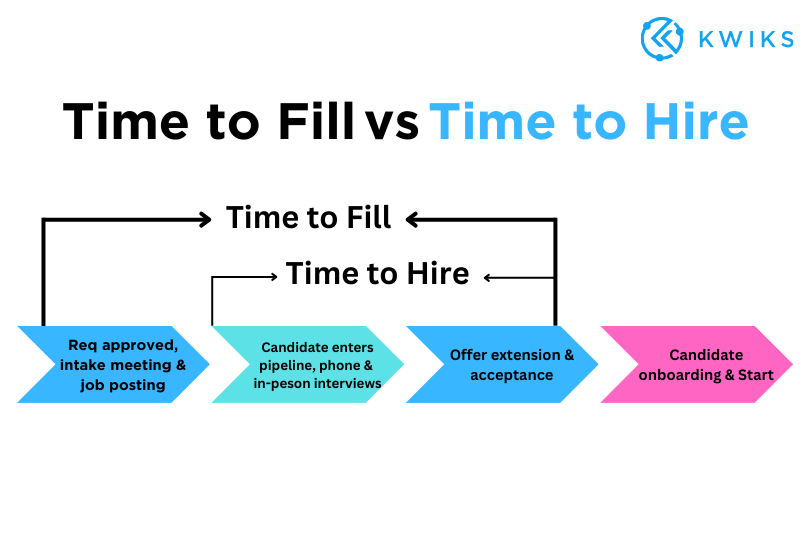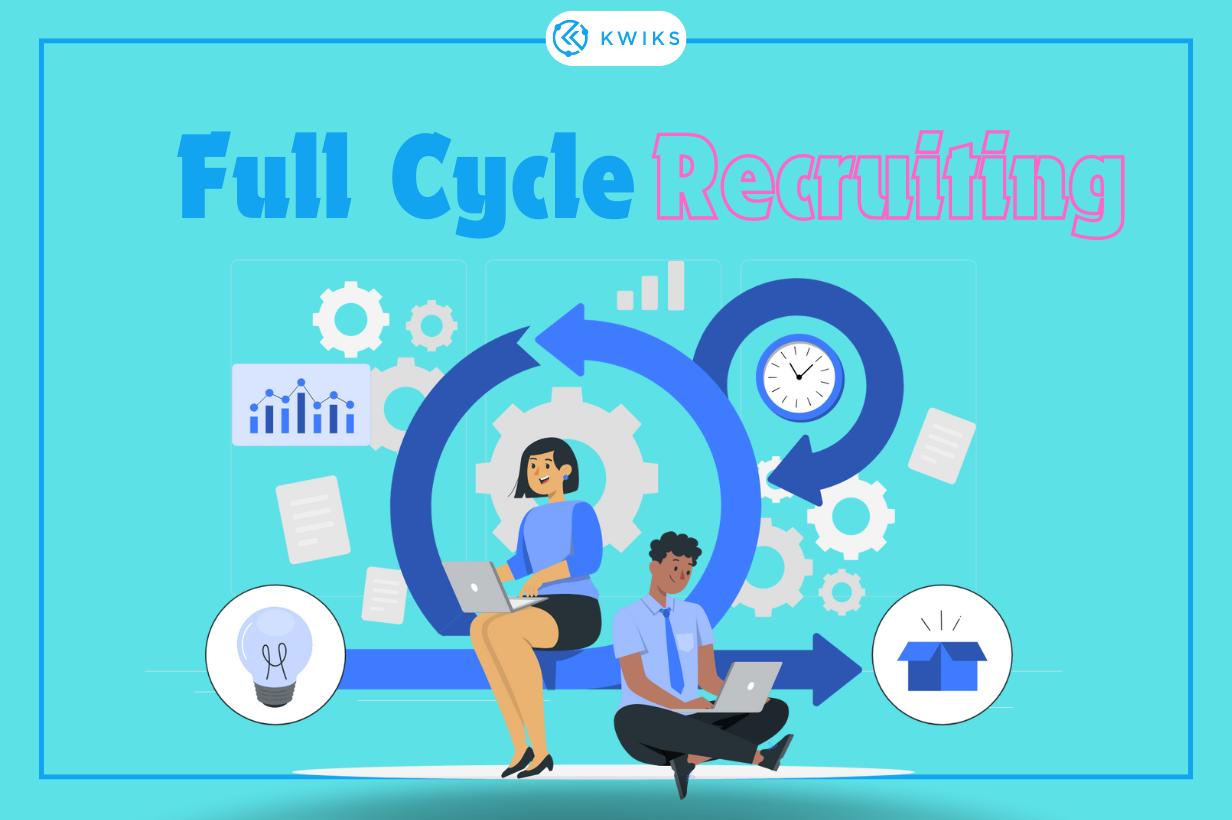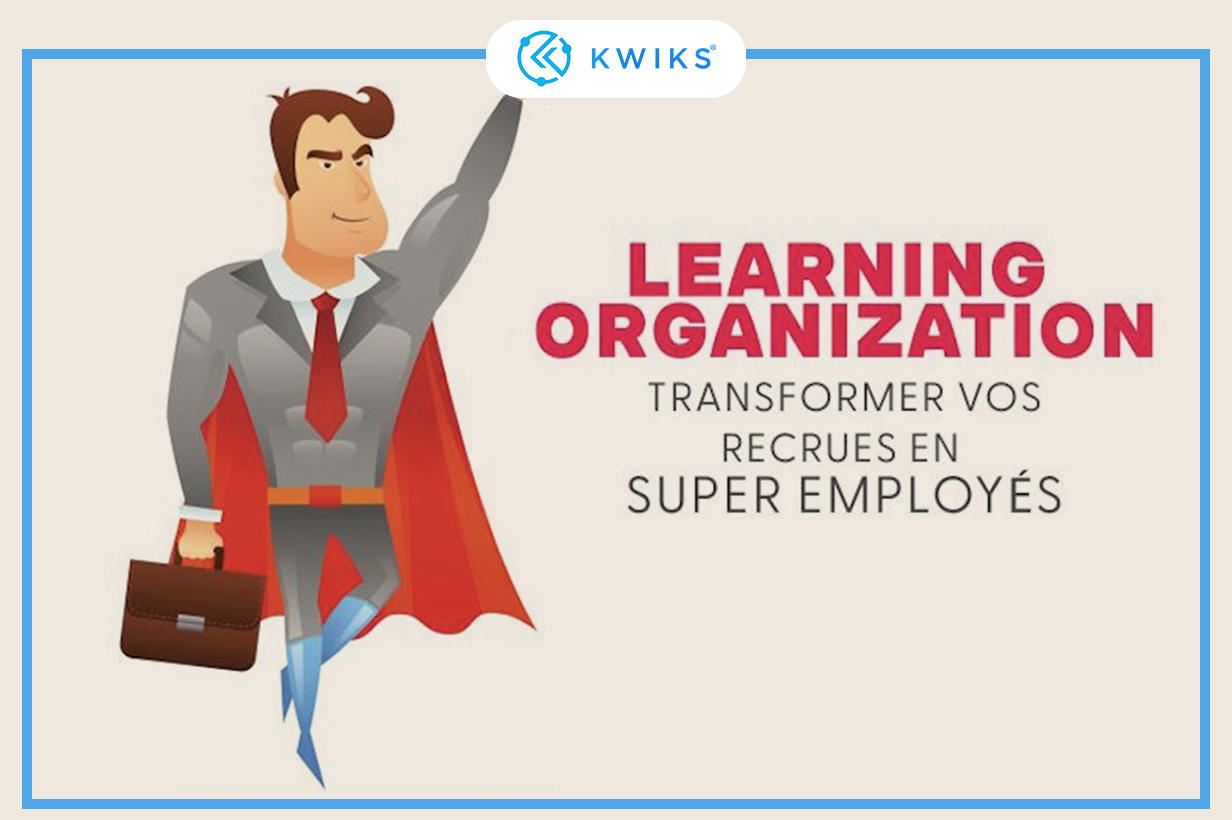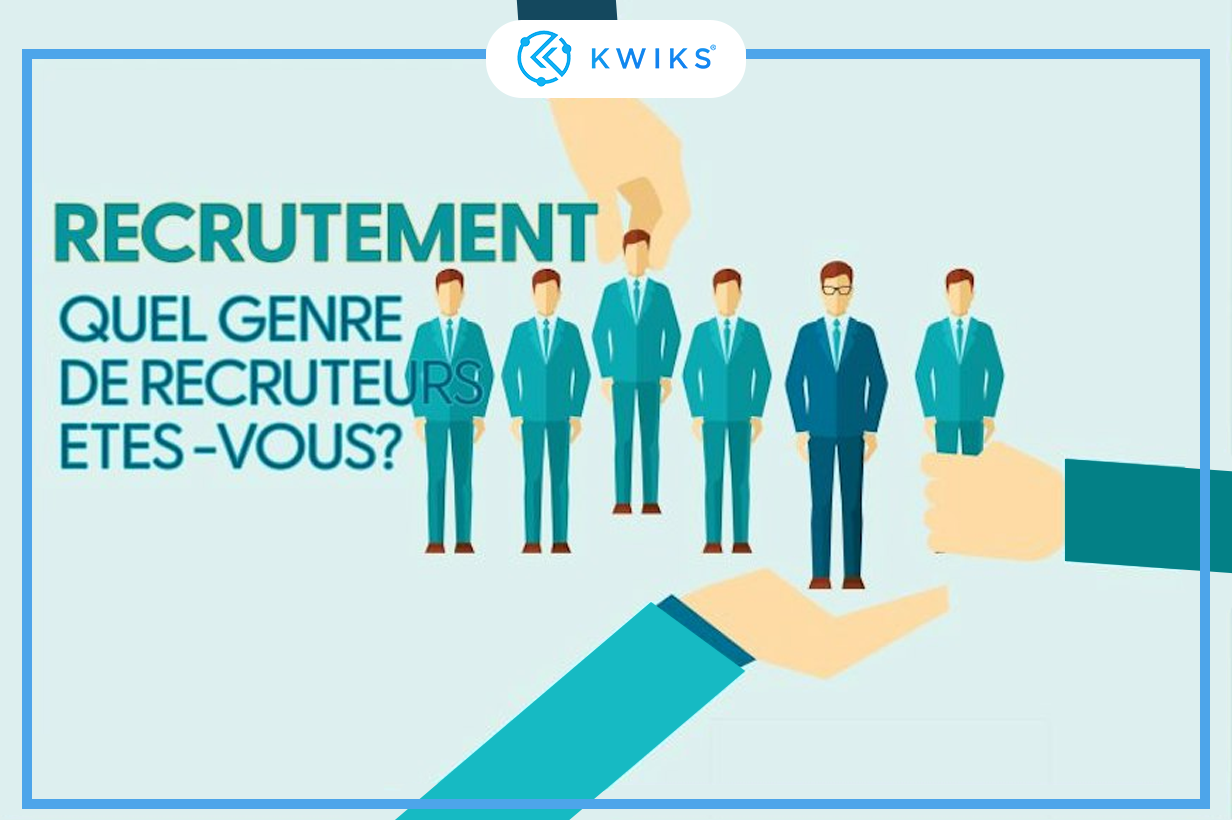
What is Time to Fill? Everything You Need to Know About This Recruitment Metric
- kwiks
- September 4, 2024
Time to Fill is a key metric that every organization should monitor, regardless of its size or industry. But what does Time to Fill actually mean? How does it differ from Time to Hire, and how can it be measured and optimized? What concrete steps can you take to reduce this timeframe in your organization?
Let’s take the example of a startup looking to fill a senior developer position. A delay in this recruitment can slow down product development, delay the launch of a new feature, and impact the company’s competitiveness. Or consider a retail chain with a manager position to fill. A prolonged vacancy in this role could lead to operational inefficiencies, decreased customer satisfaction, and missed sales opportunities. Time to Fill is not just a simple metric, it reflects the effectiveness of your recruitment strategy in supporting your business goals.
What is Time to Fill?
Time to Fill refers to the number of days needed to find and hire a new candidate. This metric is usually measured from the approval of a recruitment request until the candidate accepts the offer.
Some companies might start measuring from different points, such as:
- The submission of a recruitment request for manager approval
- The posting of a job ad online
The key is to maintain consistency in tracking all job openings.
Benefits of Tracking Time to Fill:
- Provides a realistic view of the time needed to replace a departing employee, aiding in better HR planning.
- Serves as a warning if your recruitment process is taking too long, allowing you to make timely adjustments.
- Enhances the recruitment experience, as prolonged silence can lead to candidate disengagement: 23% of candidates lose interest if they don’t hear back within a week, and 46% after two weeks.
Time to Fill vs. Time to Hire
When it comes to recruitment metrics, Time to Fill and Time to Hire are two commonly used indicators. Though often confused, they measure different stages of the recruitment process and have distinct objectives. Here’s a comparison of their differences:
Time to Hire:
- Definition: Starts when the candidate applies and ends when the candidate accepts the job offer.
- Focus: This metric centers on the candidate’s experience, reflecting how quickly they progress through the recruitment process. It’s useful for optimizing the speed and efficiency of your recruitment process.
Time to Fill:
- Definition: Starts when the recruitment request is approved and ends when the candidate accepts the offer.
- Objective: This metric provides an overview of the entire recruitment process, offering insights into overall speed and efficiency. It’s valuable for business planning and improving recruitment strategies.
It’s important to note that industry type and job role can influence these metrics, with some positions being harder to fill than others. Recognizing these differences helps in accurately evaluating and refining your recruitment efforts.

Why is Measuring Time to Fill Important?
Measuring Time to Fill is crucial for improving your HR processes and planning effectively. Here are the main benefits:
Recruitment Planning: Knowing the average time to fill a position helps you better organize your recruitment efforts and plan onboarding procedures. For instance, if filling a senior economist position takes an average of 45 days, you can start the process earlier and prepare contingency plans.
Identifying Inefficiencies: Tracking this metric helps pinpoint weak spots in your recruitment process. You’ll know which positions take longer to fill and which talent sources are most effective.
Cost Reduction: The shorter the vacancy period, the less you spend on advertising and overtime. A prolonged vacancy can also affect customer satisfaction and overall company performance.
How to Calculate Time to Fill for a Position:
Time to Fill is the number of calendar days required to fill a specific position. Here’s how to calculate it:
- Determine the Start Point: This could be the date the recruitment request was approved or the date the job ad was posted.
- Determine the End Point: This could be the date the candidate accepts the offer or the first day of their onboarding.
Formula: The number of calendar days between the start point (approval of the position by the manager or job posting date) and the end point (candidate’s acceptance of the offer or first day of onboarding).
Example: For instance, if Company X posted a marketing manager position on January 1 and chose the posting date as the start point, and the candidate accepts the offer and starts on March 15 (with the onboarding start date as the end point), the Time to Fill for this position is 75 days. It’s crucial for an organization to maintain consistency in choosing start and end points to obtain uniform data that can be compared with relevant benchmarks.
How to Reduce Time to Fill:
Here are some tips to reduce your Time to Fill:
Reduce Common Bottlenecks:
Frequent bottlenecks in the recruitment process include poor communication between the recruiter and hiring manager. Ensure that objectives are clear, follow-ups are regular, and expectations are well defined. If case studies take too long for candidates and hiring managers to evaluate, consider gamification or using automation tools to speed up the process.Use Recruitment Technology:
Automate repetitive tasks in your recruitment process. For example, invest in recruitment software that automatically links your job ads to selected job boards and social media. A recent study found that 62% of senior candidates dropped out of a recruitment process due to scheduling delays. Therefore, investing in an interview scheduling tool may be wise. You can also digitize other processes, like reference checks and onboarding document signing.Reuse Previous Candidates for Current Positions:
Recontact candidates who were previously shortlisted in your applicant tracking system. You can resume their recruitment process, saving time and money by avoiding a new pre-screening.
Take Action
Reducing Time to Fill brings many benefits to your organization. The first step is to clearly define how you measure this time and ensure consistency in your methods. With accurate data, you can better plan your recruitment activities, improve the overall efficiency of your recruitment process, and contribute to strategic business planning.
Key Takeaways:
Optimized Planning: Measuring Time to Fill helps you plan your recruitment efforts more effectively. Knowing the average time to fill a position allows you to start the process earlier and prepare contingency plans.
Identifying Inefficiencies: Tracking this metric helps identify bottlenecks in your recruitment process, allowing you to adjust strategies based on the positions and departments that take the longest to fill.
Cost Reduction: The shorter the vacancy period, the less you spend on advertising and overtime. A prolonged vacancy can also hurt customer satisfaction and overall company performance.
Improved Candidate Experience: A fast and well-managed recruitment process enhances the candidate experience, reducing the risk of disengagement and loss of interest.
Consistency in Tracking: It is crucial to maintain consistency in defining start and end points for measuring Time to Fill. This ensures reliable and comparable data for evaluating and improving your recruitment process.












